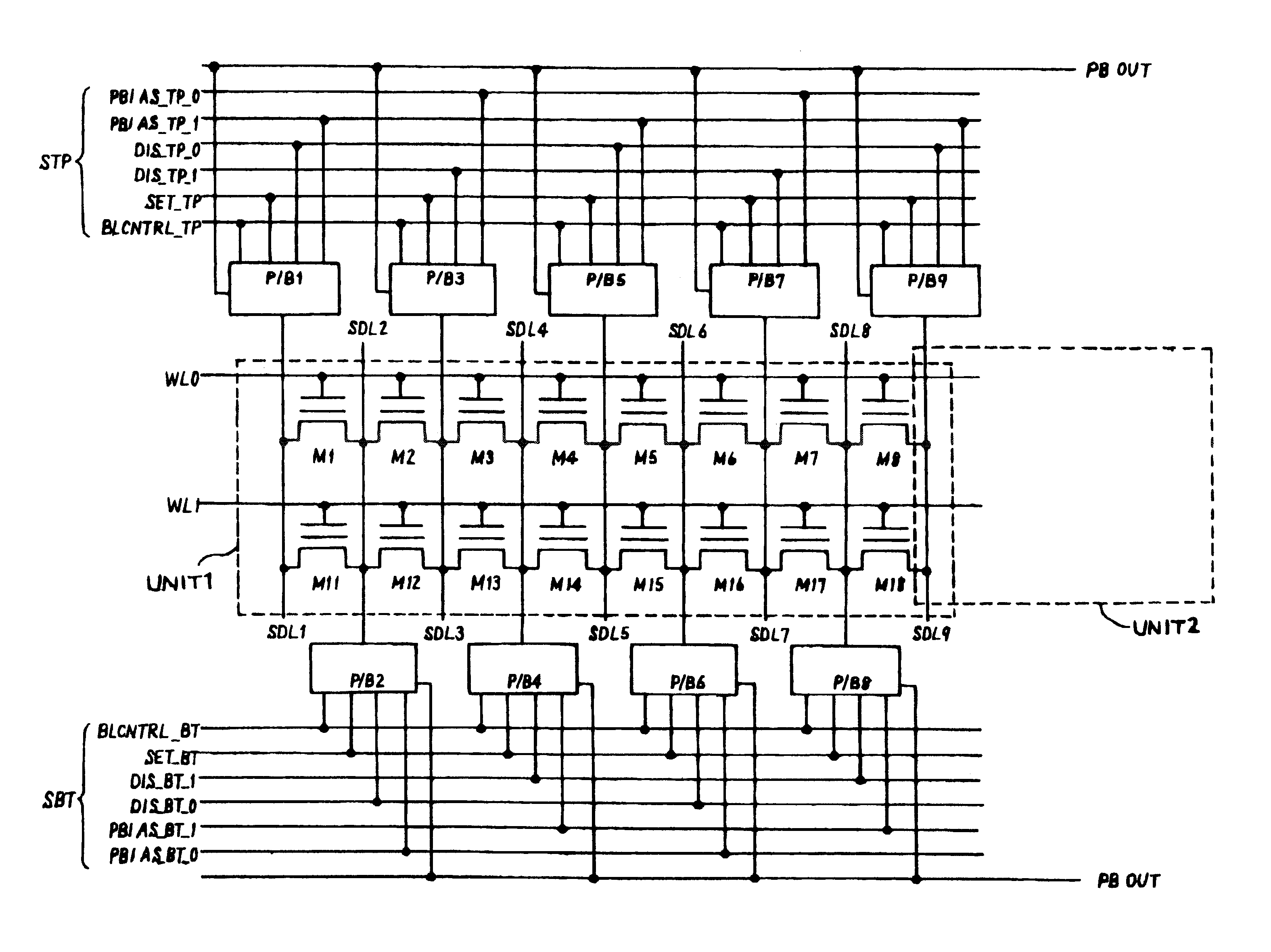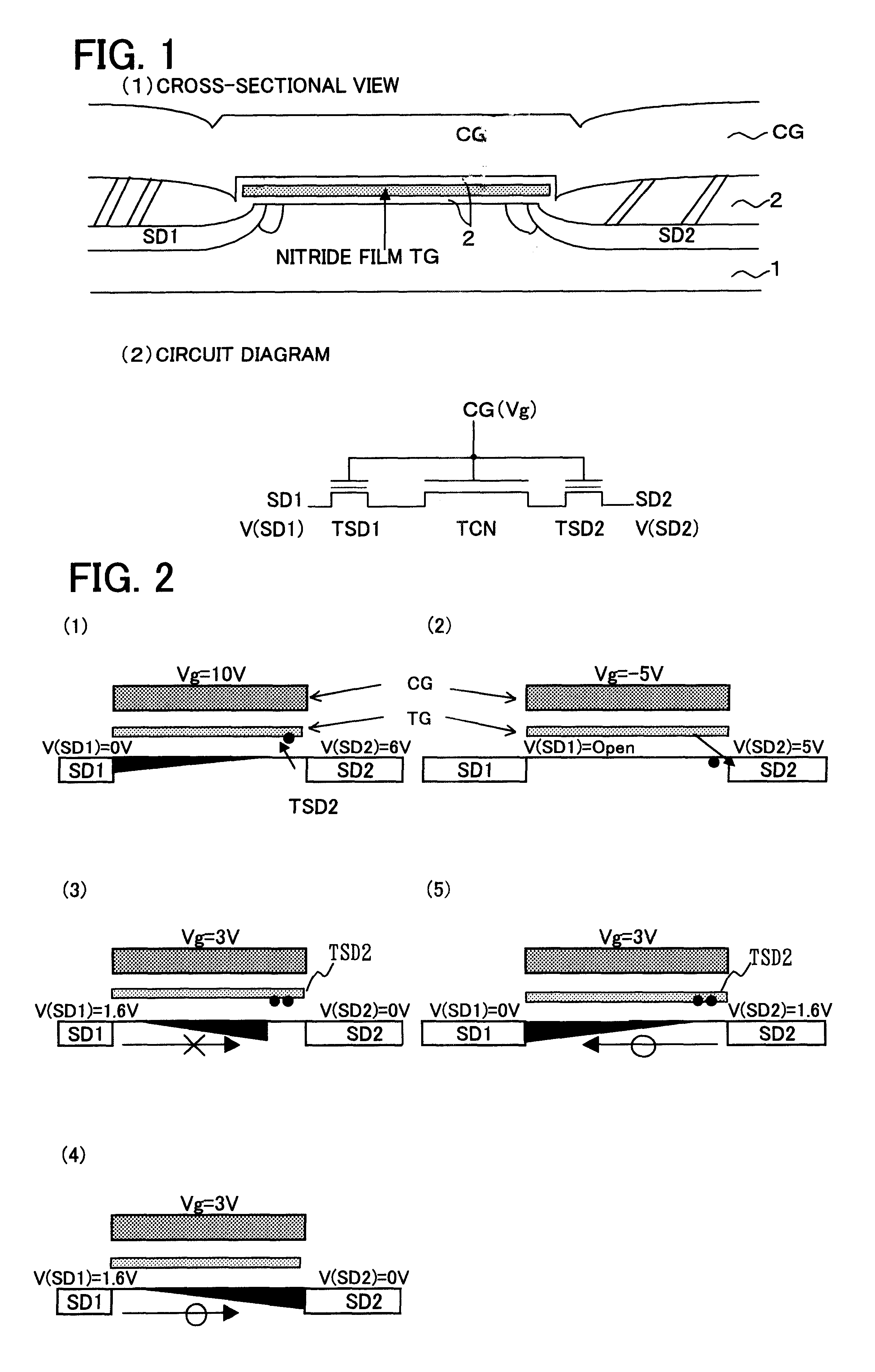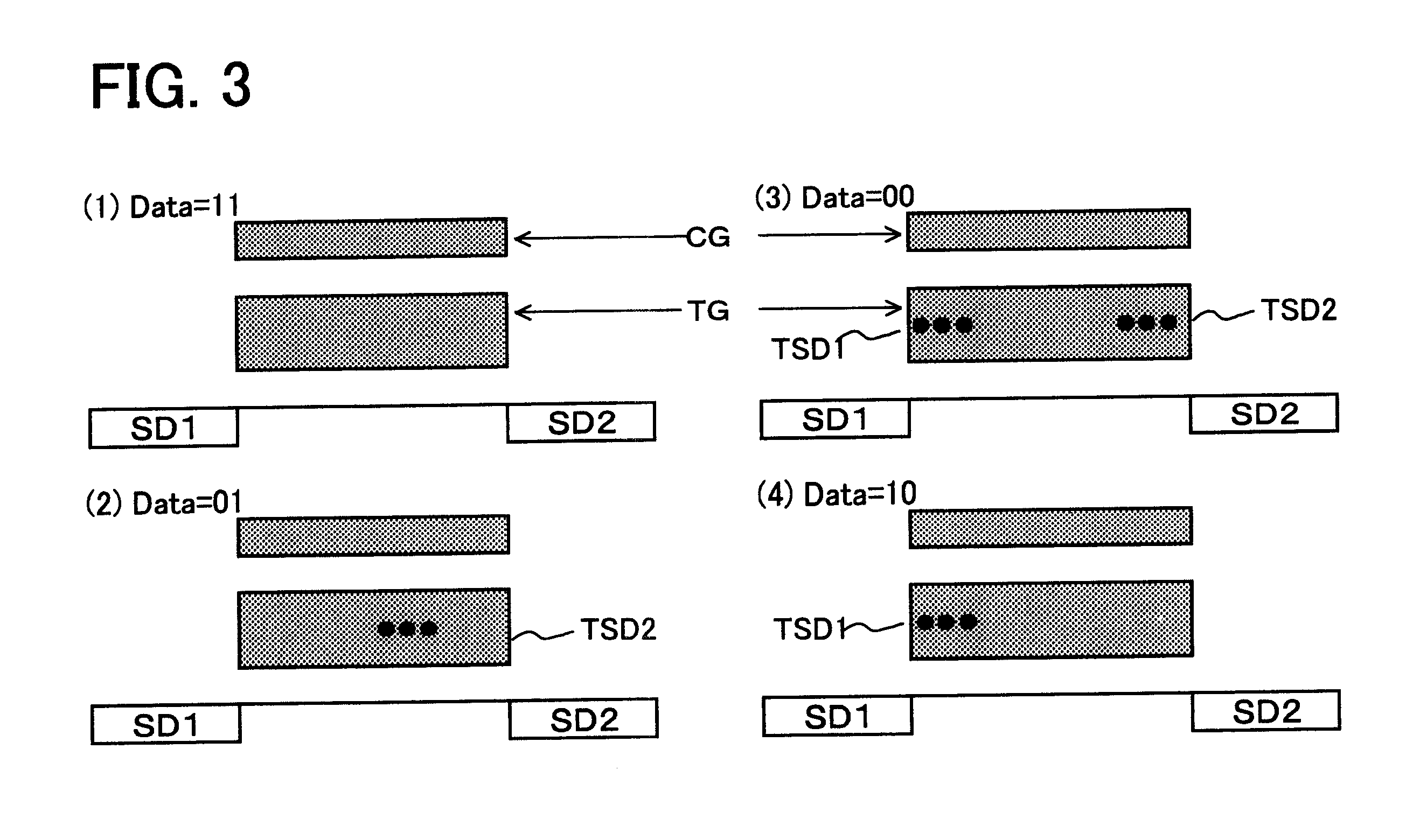Nonvolatile memory circuit for recording multiple bit information
a memory circuit and non-volatile technology, applied in static storage, digital storage, instruments, etc., can solve the problems of inability to accurately perform the read-out of the cell transistor m1, inability to achieve high reliability, and loss of all the electronic components of the floating ga
- Summary
- Abstract
- Description
- Claims
- Application Information
AI Technical Summary
Problems solved by technology
Method used
Image
Examples
Embodiment Construction
The embodiment of the present invention will be described hereinbelow by referring to the drawings. However, this embodiment does not limit the technological scope of the present invention.
The embodiment of the present invention is a non-volatile memory circuit which has a plurality of cell transistors capable of storing two bits. Cell transistors of this kind are the same as the conventional cell transistors illustrated by FIGS. 1, 2, 3. In other words, two-bit information can be recorded in a single cell transistor according to whether or not electrons are trapped at both ends of a non-conductive trapping gate. For this reason, programming (write), erase and read-out operations with respect to a cell transistor are as shown in FIG. 2, and a repeat description thereof is not provided here.
FIG. 6 is a figure to show the cell array constitution of the present embodiment in which a plurality of such cell transistors are arranged in a matrix. In the cell array shown in FIG. 6, two word...
PUM
 Login to View More
Login to View More Abstract
Description
Claims
Application Information
 Login to View More
Login to View More - R&D
- Intellectual Property
- Life Sciences
- Materials
- Tech Scout
- Unparalleled Data Quality
- Higher Quality Content
- 60% Fewer Hallucinations
Browse by: Latest US Patents, China's latest patents, Technical Efficacy Thesaurus, Application Domain, Technology Topic, Popular Technical Reports.
© 2025 PatSnap. All rights reserved.Legal|Privacy policy|Modern Slavery Act Transparency Statement|Sitemap|About US| Contact US: help@patsnap.com



